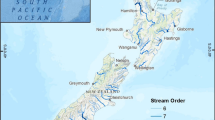Abstract
The tasks of restoring rivers, watersheds, and other critical habitats are complex and represent some of the most difficult challenges faced by natural resource scientists and managers today. Blame for society’s inability to adequately deal with restoration challenges is placed on both scientists and policy makers. Some people argue that the necessary information and levels of certainty fall far short of scientific standards for decision making; others argue that science is not the issue, and indecisiveness merely reflects a lack of political leadership and will. Regardless, the discussion ultimately focuses on the science-policy interface as a root cause of the inability to address such complex management issues. Both science and policy hold unique cultural positions, values, and norms. When the two spheres try to communicate, these differences can interfere with developing, selecting, and implementing management alternatives. This chapter addresses the topic of science and policy communications, offers a conceptual framework to assist in understanding how scientists and policy makers might forge a new dialogue, and discusses additional institutional and individual constraints to restoration efforts. Examples of approaches toward overcoming these constraints provide hope for addressing and ultimately realizing the restoration challenges that lie ahead.
Access this chapter
Tax calculation will be finalised at checkout
Purchases are for personal use only
Preview
Unable to display preview. Download preview PDF.
Similar content being viewed by others
References
Adams, P.W. and A.B. Hairston. 1996. Calling all experts: Using science to direct policy. Journal of Forestry 94(4):27–30.
Antypas, A. and E.E. Meidinger. 1996. Science-intensive policy disputes: An analytic overview of the literature. People and Natural Resources Program, USFS, PNW Research Station.
Brown, K. 2000. A new breed of scientist-advocate emerges. News Focus. Science 287:1192–1195.
Currens, K.P., H.W. Li, J.D. McIntyre, D.R. Montgomery, and D.W. Reiser. 2000. Review of “Statewide Strategy to Recover Salmon: Extinction is Not an Option.” Report 2000–1, Independent Science Panel, Olympia, Washington.
Funtowicz, S. and J. Ravetz. 1993. Science for the post-normal age. Futures 25:739–52.
Hanley, T.A. 1994. Interaction of wildlife research and forest management: The need for maturation of science and policy. Forestry Chronicle 70:527–532.
Hellstrom, T. 1996. The science-policy dialogue in transformation: Model-uncertainty and environmental policy. Science and Public Policy 23:91–97.
Jager, J. 1998. Current thinking on using scientific findings in environmental policy making. Environmental Modeling and Assessment 3:143–153.
Kaiser, J. 2000. Ecologists on a mission to save the world. News Focus. Science 287:1188–1192.
Ruckleshaus, W.D. 2000. Turning on the money spigot to save the salmon. Seattle Post-Intelligencer, July 23, 2000. Page G1.
Szaro, R.C., J. Berc, S. Cameron, S. Cordle, M. Crosby, L. Martin, D. Norton, R. O’Mallay, and G. Ruark. 1998. The ecosystem approach: Science and information management issues, gaps and needs. Landscape and Urban Planning 40:89–101.
Taylor, S. 1984. Making Bureaucracies Think: The Environmental Impact Statement Strategy of Administrative Reform. Stanford University Press, Stanford, California.
Yaffee, S. 1997. Why environmental policy nightmares recur. Conservation Biology 11:328–337.
Author information
Authors and Affiliations
Editor information
Editors and Affiliations
Rights and permissions
Copyright information
© 2008 Springer Science+Business Media, LLC
About this chapter
Cite this chapter
Ryan, C.M., Jensen, S.M. (2008). Scientific, Institutional, and Individual Constraints on Restoring Puget Sound Rivers. In: Marzluff, J.M., et al. Urban Ecology. Springer, Boston, MA. https://doi.org/10.1007/978-0-387-73412-5_42
Download citation
DOI: https://doi.org/10.1007/978-0-387-73412-5_42
Publisher Name: Springer, Boston, MA
Print ISBN: 978-0-387-73411-8
Online ISBN: 978-0-387-73412-5
eBook Packages: Biomedical and Life SciencesBiomedical and Life Sciences (R0)




